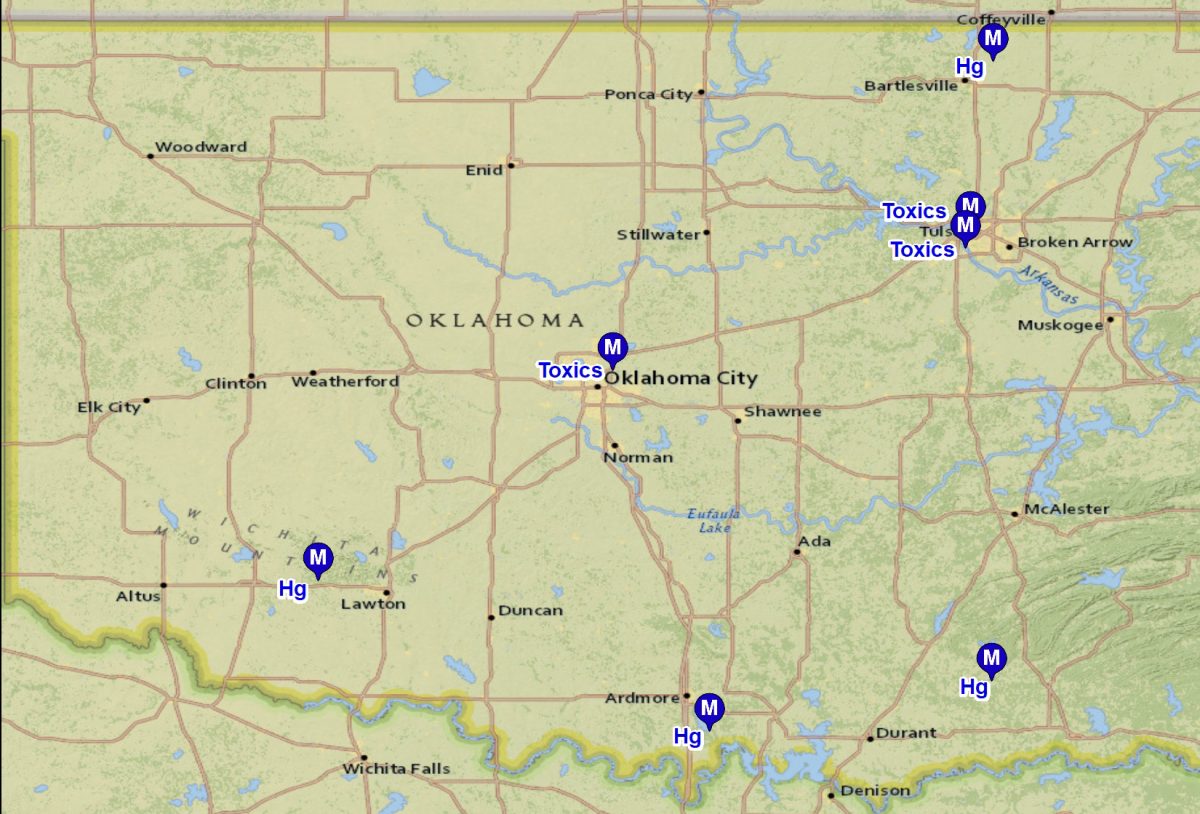Toxics
The Air Toxics Program relies on delegated portions of the EPA program for permitting, compliance and enforcement, while emphasizing ambient monitoring to evaluate the air toxic concerns unique to Oklahoma. Rules for the Air Toxics Program can be found in Subchapter 42 and the list of pollutants and standards for the program can be found in Appendix O.
The pollutants in Appendix O were selected because of their relevance to Oklahoma. Should the levels in Appendix O be exceeded, an “area of concern” could be designated, allowing resources to be focused on finding local solutions to that area.
Mercury
Mercury is a naturally occurring element that can exist as a solid, liquid or a gas. Mercury has been classified as a hazardous air pollutant (HAP), or toxic air pollutant, by the EPA. The Oklahoma DEQ regulates mercury as a toxic air contaminant under OAC:252:100 Subchapter 42 and Appendix O.
The Air Quality Division has sampling sites that are operated and maintained as part of a national effort to collect weekly samples of total mercury in precipitation. This collaborative effort is organized by the National Atmospheric Deposition’s (NADP) Mercury Deposition Network (MDN).
The NADP is a cooperative monitoring program of federal and state agencies, academic institutions, Native American tribal governments and private organizations. Although the NADP network began in 1978, the MDN just started measuring total mercury in precipitation (wet deposition) in 1996.
MDN’s objective is to develop a nationwide database of weekly concentrations of total mercury in precipitation, and the seasonal and annual flux of total mercury in wet deposition. The data will be used to identify seasonal trends in mercury deposited to surface waters, forested watersheds and other sensitive receptors.
NADP Mercury Deposition Network
Current Toxics and Mercury Sites



